|
Tao Te Ching
THE TAOISM OF LAO TZU
|
Tao Te Ching
|
The Book
The Taoism of Lao Tzu Explained. The great Taoist philosophy classic by Lao Tzu translated, and each of the 81 chapters extensively commented. Click the image to see the book at Amazon (paid link). |
The Necessity of Emptiness
This chapter, with its focus on the essential role of emptiness, could just as well be a Zen saying. Surely, Lao Tzu made this observation with a smile on his face. The paradox of emptiness making so many things useful is amusing.
In Zen, emptiness is taken much more seriously. If there is a purpose to be pointed out in Zen meditation, it's to strip oneself of any unnecessary thought to reach the state of an empty mind. This mental emptiness is regarded as the foremost clarity, a wisdom liberated from knowledge. It's not far from the ideal of the Tao Te Ching.
Lao Tzu returns to the subject from several different angles. He propagates the superiority of doing nothing, of keeping people ignorant, of presupposing nothing, and so on. This brings his ideas close to those of Zen. But he has other reasons. To him, this is the conclusion one reaches from studying the order and workings of the universe.
Emptiness is not something by which the human mind advances, but finds its roots. When we realize the significance of emptiness in nature, we return to it and become again in harmony with it. Because nature operates by emptiness, so should mankind.
When Lao Tzu states that the value comes from what is there, but the use from what is not, he strongly advocates the latter. The value of what is visible and palpable is an illusion. It has no use without that which is absent. What is of no use has no value.
Bringing Order to Chaos
The use, the function, is closer to Tao, because Tao is present through how it works and how it makes the world work. One could say that it's much more a verb than a substantive. Therefore, an object without a function is as meaningless as the chaos that existed prior to the order introduced to the universe by Tao.Although Lao Tzu seems to have cared very little for decorations, his statement does not exclude them completely from what can be valued in this world. Beauty is a function, and indeed there is a lot of necessary emptiness in the arts. Music is played on the silence between the tones, as well as on the tones. Great novels intrigue us with what is not spelled out. Paintings fascinate us by what they omit. Dance enchants by moments of stillness.
Nothingness is present everywhere. Without it, chaos would return. So, in the universe of the Tao Te Ching, order was accomplished by introducing emptiness into the full, balancing something with nothing. Emptiness is a blessing, without which it would all be too much.
We need to remind ourselves of this simple fact. Music soothes the soul, but not if we listen to it constantly. Colors delight our eyes, but more so when they are handled with some restrain. Dance invigorates, but excess fatigues us. Everything should be enjoyed moderately, and we should make sure to have generous portions of tranquil emptiness in our lives.
Maybe the best symbol of this is a work of calligraphy, where the black ink forms an intriguing character – but only because so much of the paper is left white, untouched by the brush.
NEXT
Tao Te Ching Explained
Preface
Introduction
Literature
translated and explained by Stefan Stenudd.
1 |
2 |
3 |
4 |
5 |
6 |
7 |
8 |
9 |
10 |
11 |
12 |
13 |
14 |
15 |
16 |
17 |
18 |
19 |
20 |
21 |
22 |
23 |
24 |
25 |
26 |
27 |
28 |
29 |
30 |
31 |
32 |
33 |
34 |
35 |
36 |
37 |
38 |
39 |
40 |
41 |
42 |
43 |
44 |
45 |
46 |
47 |
48 |
49 |
50 |
51 |
52 |
53 |
54 |
55 |
56 |
57 |
58 |
59 |
60 |
61 |
62 |
63 |
64 |
65 |
66 |
67 |
68 |
69 |
70 |
71 |
72 |
73 |
74 |
75 |
76 |
77 |
78 |
79 |
80 |
81 |
Tao Te Ching Explained
James Legge's Tao Te Ching
Aleister Crowley's Tao Te Ching
The 1st Chapter of Tao Te Ching in 76 Versions
Lao Tzu — Legendary Author of Tao Te Ching
My Taoism BooksClick the image to see the book at Amazon (paid link).
The Taoism of Lao Tzu Explained. The great Taoist philosophy classic by Lao Tzu translated, and each of the 81 chapters extensively commented. |
About Cookies
My Other Websites:
I Ching Online
The 64 hexagrams of the Chinese classic I Ching and what they mean in divination. Try it online for free.
Qi Energy Exercises
The ancient Chinese life energy qi (chi) explained, with simple instructions on how to exercise it.
Life Energy
The many ancient and modern life force beliefs all over the world explained and compared.
Taoismen på svenska
Other Books by Stefan Stenudd
Click the image to see the book at Amazon (paid link).
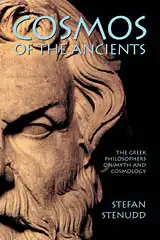 Cosmos of the Ancients
Cosmos of the Ancients
The Greek philosophers and what they thought about cosmology, myth, and the gods.
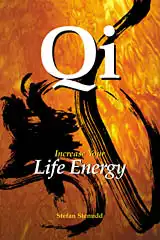 Qi — Increase Your Life Energy
Qi — Increase Your Life Energy
The life energy qi (also chi or ki) explained, with exercises on how to awaken, increase and use it.
 Aikido Principles
Aikido Principles
Basic concepts of the peaceful martial art. Aikido principles, philosophy, and fundamental ideas.
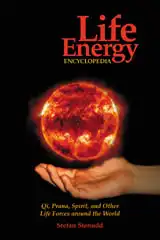 Life Energy Encyclopedia
Life Energy Encyclopedia
Qi, prana, spirit, ruach, pneuma, and many other life forces around the world explained and compared.
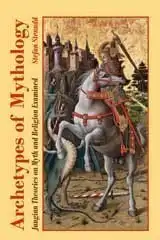 Archetypes of Mythology
Archetypes of Mythology
Jungian theories on myth and religion examined, from Carl G. Jung to Jordan B. Peterson.
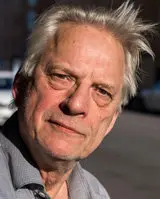 Stefan Stenudd
Stefan Stenudd
About me
I'm a Swedish author and aikido instructor. In addition to fiction, I've written books about Taoism and other East Asian traditions. I'm also an historian of ideas, researching ancient thought and mythology. Click the image to get to my personal website.Contact

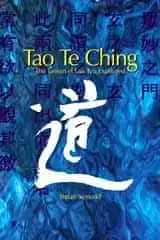 Tao Te Ching
Tao Te Ching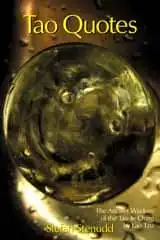 Tao Quotes
Tao Quotes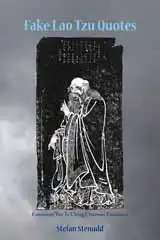 Fake Lao Tzu Quotes
Fake Lao Tzu Quotes